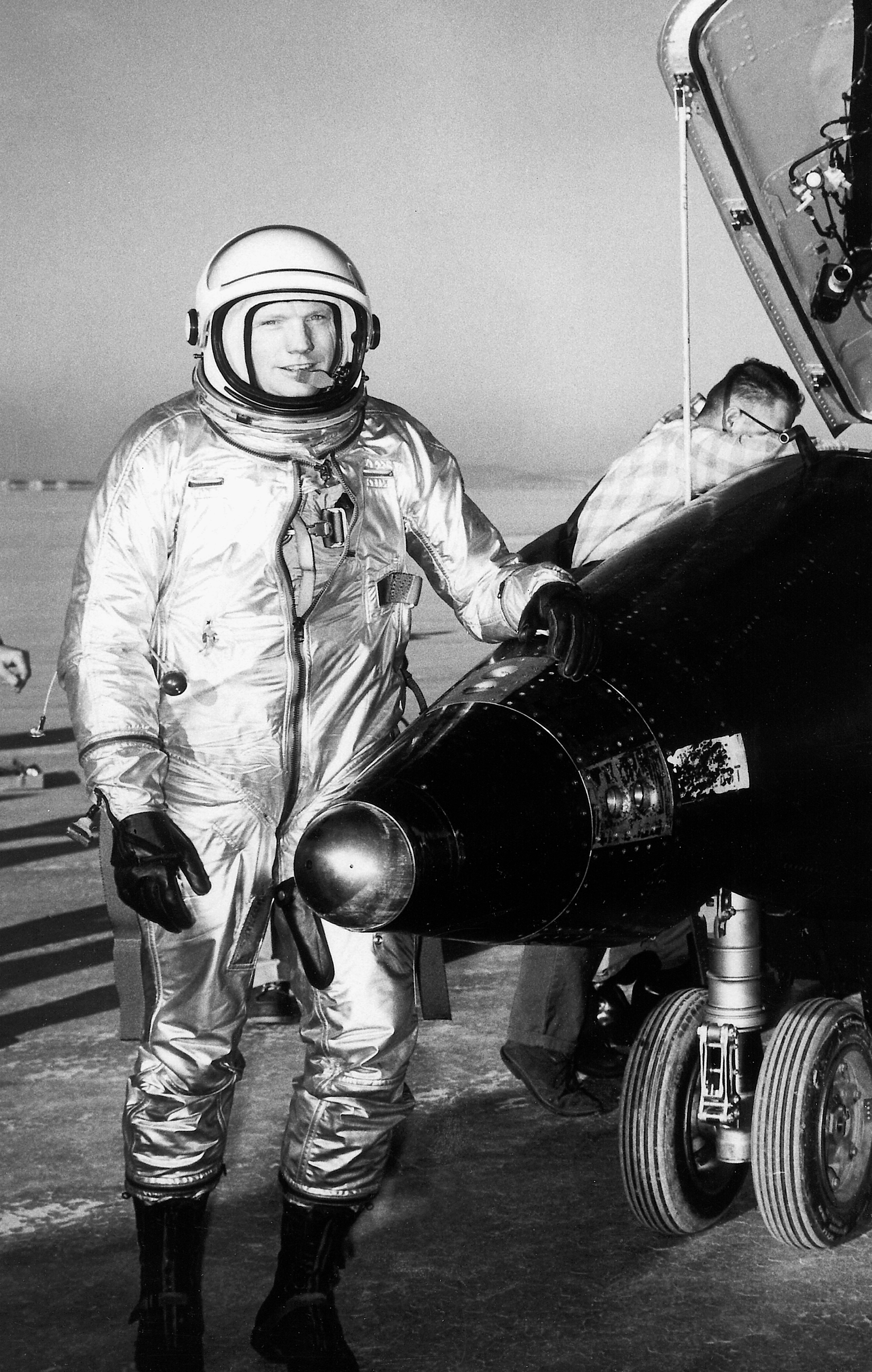Space History Photo: Pilot Neil Armstrong with X-15

In this 1960 photo from the U.S. space agency, NASA test pilot Neil Armstrong is seen here next to the X-15 ship #1 after a research flight. Armstrong was a naval aviator from 1949 to 1952. When he left the military, he became a test pilot and later, of course, was the first man on the moon. [Giant Leaps: Top Milestones in Human Spaceflight]
The X-15 was a rocket-powered aircraft 50 feet long with a wingspan of 22 feet. It was a missile- shaped vehicle with an unusual wedge-shaped vertical tail, thin stubby wings, and unique side fairings that extended along the side of the fuselage. A total 12 test pilots flew the X-15, the nation's first rocket plane. All total, 199 flights were made between 1959 and 1968. Eight of the pilots reached altitudes at or above 264,000 feet — 50 miles — a height recognized then by the U.S. Air Force as being the edge of space. Those pilots were awarded astronaut wings.
In this new series, each weekday, SPACE.com looks back at a the history of spaceflight through photos.
Get the Space.com Newsletter
Breaking space news, the latest updates on rocket launches, skywatching events and more!
Join our Space Forums to keep talking space on the latest missions, night sky and more! And if you have a news tip, correction or comment, let us know at: community@space.com.

The National Aeronautics and Space Administration (NASA) is the U.S. government agency in charge of the civilian space program as well as aeronautics and aerospace research. Founded in 1958, NASA is a civilian space agency aimed at exploring the universe with space telescopes, satellites, robotic spacecraft, astronauts and more. The space agency has 10 major centers based across the U.S. and launches robotic and crewed missions from the Kennedy Space Center in Cape Canaveral Florida. It's astronaut corps is based at the Johnson Space Center in Houston. To follow NASA's latest mission, follow the space agency on Twitter or any other social channel, of visit: nasa.gov.
Most Popular

